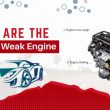The BMW E46 is a popular model among BMW enthusiasts, and its steering system is a vital component of the vehicle’s performance. If you’re experiencing problems with the steering on your BMW E46, it’s essential to take care of them right away to prevent further damage and ensure your safety on the road. Let us see a detailed guide on how to fix the steering on your BMW E46.
Step 1: Check the Level of the Power Steering Fluid
Checking the power steering fluid level is the first step in correcting the steering on your BMW E46. Low power steering fluid can affect the steering system and result in problems like a noisy steering pump or trouble turning the wheel. Open the hood and look for the reservoir for the power steering fluid to check the level. The reservoir is typically found on the driver’s side, next to the engine. A dipstick in the reservoir shows the fluid level. Fill it up to the required level of fluid if the level is low. Use the power steering fluid that the manufacturer suggests; this information is typically provided in the owner’s handbook.
Step 2: Examine the Steering Components
The steering components will then be examined if the power steering fluid level is satisfactory. The steering system is made up of a number of parts, including the steering coupler, ball joints, and tie rod ends. Over time, these components may deteriorate and cause steering problems. Jack up the automobile and place it on jack stands to inspect the steering components. Visually check the steering parts for any signs of wear or damage. When turning the wheels, check for any steering play. Replace any worn or damaged components with new ones as soon as you see them.
Step 3: Check the Power Steering Pump
Another crucial part of the steering system is the power steering pump. There may be difficulties turning the wheel or a noisy power steering pump as a result of a broken power steering pump. Start the engine, then move the steering wheel from lock to lock to inspect the power steering pump. Keep an ear out for any odd noises or grinding sounds. For any leaks or anomalies, inspect the pump. The pump might need to be changed if it’s broken.
Step 4: Check the Steering Rack
The most important part of the steering system is the steering rack. Significant steering problems, such as loss of control or difficultly turning the wheel, might result from a damaged steering rack. Lift the automobile off the ground and place it on jack stands to inspect the steering rack. Visually check the steering rack for any indications of wear, corrosion, or leakage. Check the steering for any play or looseness by turning the wheel. The steering rack should be replaced if there is any damage or wear.
Step 5: Align the Wheels
Uneven tyre wear and tugging to one side are two examples of steering problems that can result from improper wheel alignment. Take your BMW E46 to a reputable alignment company to have the alignment fixed. A skilled mechanic will align the wheels in accordance with the manufacturer’s recommendations. Your BMW E46 will handle and steer better and have longer tyre life with proper alignment.
Also Read: Ford Explorer Steering Rack Buyer’s Guide
Conclusion
For the safety and functionality of your BMW E46, the steering needs to be fixed. Follow the instructions in this blog if you’re having problems with the steering, such as trouble turning the wheel or a noisy steering pump. Examine the steering parts, the power steering pump, the steering rack, and the level of the power steering fluid before straightening the wheels. You should take your BMW E46 to a trained mechanic or dealership for a diagnosis and repair if you don’t feel confident handling these tasks on your own.



